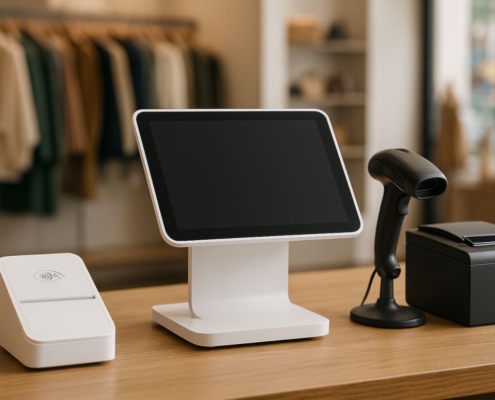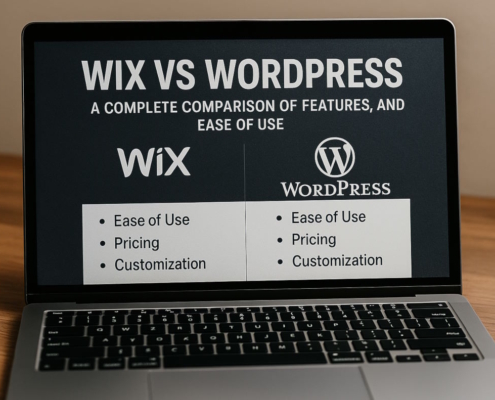Introduction
To make sure you can reach consumer markets and have the capabilities that you need to operate your business and maintain it going forward, it is essential to identify the best platforms for selling your products. In order to create online storefronts, entrepreneurs are looking for platforms with the latest technology as the e-commerce market gets more competitive. For e-commerce to succeed, you must find a platform with features that offer both ways to draw in customers and ways to engage them with your products.
While Shopify and Etsy are compared in this post, it’s crucial to understand how the two platforms differ from one another and how both can be utilized in tandem to expand your clientele.
An Overview of Shopify vs Etsy
Two incredibly popular e-commerce sites that let firms sell their goods and draw billions of revenues worldwide are Shopify and Etsy. The main distinction is that Shopify is a specialized e-commerce platform that enables brands to administer their operations and create their own e-commerce websites.
Conversely, Etsy is a well-known and reputable marketplace that is the best location to find antique goods, arts and crafts materials, and handmade goods. This post will discuss the main distinctions between the platforms and the situations in which you would want to use one or both of them. Well, let’s get started!
Shopify: What is it?
Shopify is a comprehensive platform for commerce that seeks to give companies all the resources they require to sell on the internet and offline, as well as the architecture and tools they need to expand and thrive.
Every day, millions of enterprises rely on Shopify, making use of its capabilities to create and manage online stores, sell globally, and sell on a variety of mediums, including phones, tablets, the web, physical stores, and pop-up shops. Shopify serves as a centralized administrative platform for businesses that sell goods via a wide range of platforms, including social media accounts and online marketplaces.
In addition to offering the e-commerce platform, Shopify also handles the hosting, security, servers, and architecture needed to store and operate the business, eliminating the need for the brand to maintain or set this up. Shopify’s primary offering is its online sales platform, which gives users access to a wide variety of website layouts with various features and designs.
Additionally, the platform provides a comprehensive back-end administrator to enable companies to oversee inventory, order processing, and payment processing. Shopify’s checkout, which offers all the main payment methods and accelerated payment alternatives, is well known for having the greatest conversion rate around the world. Shopify also includes content writing, social media outlets like Meta and TikTok, and marketing SEO tools.
Shopify takes into account every aspect of the business and provides tools and updates designed to support the expansion of companies. For instance, brands can get more advanced checkout customizations, a greater order processing capacity, and enterprise-level assistance by upgrading to Shopify Plus.
Although Shopify’s technology is well-known and scalable, the quantity and caliber of third-party app developers that are available through the Shopify App Store is one of the main advantages. You may customize the App Store without having to modify the code thanks to the dozens of applications and functions created by outside developers. Additionally, the user base can employ Shopify Experts from the marketplace to create unique solutions for their companies.
By utilizing Shopify’s servers & checkout security, marketers can create distinctive and frictionless web pages for their customers and grow their businesses virtually limitlessly. Shopify Markets allows brands to sell globally, host their domain safely, and market their goods through a variety of methods.
Etsy: What is it?
An online marketplace called Etsy has a “storefront” where a number of online merchants are housed. Since all of the vendors on Etsy have a single trait in common—their products are whimsical and crafty—the market is extremely competitive. For your clients, Etsy’s involvement in the buying process is crucial. According to Etsy’s perspective on the e-commerce industry, their products are “handcrafted, antique Etsy pattern, or quirky.”
Additionally, the concept has proven successful, as they currently have almost 82 million global customers. Both independent small and large sellers are welcome to sell on Etsy’s marketplace. Consequently, it is often an entry-level store, ideal for new sellers with little stock and unique items who wish to attract customers quickly.
1. Pricing: Shopify vs Etsy
The most important consideration includes selecting online shopping sites and channels along with prices and rates. Assuming that you are using Shopify or Etsy alike, it is important to understand that you need to assess the entire cost to run an online business and not just the Shopify or Etsy fee. In doing so, we always make a point to stress that there are always such unexpected costs as fees for the listing, transaction, and also fees associated with applications, add-ons, and fees for maintaining the sales channel.
Selecting online shopping sites and channels, prices, and rates are the most important considerations. When assessing the cost to run an online business, it is important to understand the entire cost structure and all factors even if you choose to use Shopify or Etsy alike. We always stress that, consider such unexpected costs as, perhaps, listing or transaction fees; fees associated with applications, add-ons, and maintenance of the sales channel.
Etsy
On Etsy, standard selling carries a cost rather than a monthly subscription. Each product listing charge is $0.20. Until the good is sold, the listing charge will be shown throughout the Etsy marketplace. It should be noted that Etsy imposes a 6.5 percent transaction cost at the time of payment, which is distinct from the processing charge for payment fees. An extra 4% Plus 0.20p is normally charged by Etsy, though this varies depending on the bank account’s location.
Since Etsy is a marketplace, the layout of products plays an important role in helping buyers find and purchase the goods of a brand. Etsy in turn provides a cost-per-click advertisement option that enables marketers to sponsor their items to appear in the front positions of search results. CPC ad prices are determined by an auction system that takes into account the demand for a specific keyword. Bids are capped by the sellers’ budget each day. Additionally, Etsy offers off-site advertisements where sellers are automatically enrolled and Etsy receives twelve to fifteen percent of sales.
Since Etsy fees might reduce the margins of profit on more expensive goods, it’s critical to fully comprehend all of them before selling. Although e-commerce businesses often charge payment processing costs, Etsy’s rates are marginally higher than the industry standard. The transaction costs on Etsy shouldn’t significantly reduce your earnings if you sell products on a smaller scale, and the monthly fee might easily pay the cost of running your online store. In conclusion, Etsy simply charges you when a sale is made, so unless you choose a subscription plan, you don’t need to fret about losing cash.
Shopify
However, when comparing Shopify with Etsy, Shopify offers much more customization and flexibility for a higher initial cost, making it a better option overall. This is advantageous if you want to grow your company. Three different price choices are offered, along with a brief free trial. Basic Shopify: £19 paid each month: Among the features of this package are an e-commerce website, a blog to which merchants can contribute material, the capacity to list an indefinite number of items, two personnel accounts, round-the-clock support, & multichannel selling.
For £49 per month, Shopify offers five worker accounts, gift cards, expert reports, reduced credit card fees, and extras across the point of sale. The Advanced Shopify plan costs £259 per month and includes fifteen staff accounts, a sophisticated report builder, third-party-determined delivery fees, and reduced credit card rates. The most advanced plan offered by Shopify is called Plus, and it is primarily targeted at big businesses that are expanding rapidly.
If you need the extra capabilities, the monthly charge is worthy of the significant increase above Etsy’s. Etsy serves as a sales channel, while Shopify is a full-fledged internet business for e-commerce. The “Basic” plans offered by Shopify give you all the tools you need to effectively manage a small to medium-sized online store. Shopify offers additional scalability with its more expensive solutions, which are ideal for larger businesses with a large workforce.
Payments should be taken into account while evaluating pricing. Starting at 1.5% plus $0.30 for sales made online, Shopify’s transaction costs are a little higher for the less expensive plans. Unless you purchase the Plus plan, Etsy does not impose a monthly fee, therefore you will be responsible for additional fees on a per-sale premise. Third parties have developed profit calculations for merchants due to the high number of these fees.
2. Design & Customizability: Shopify vs Etsy
Etsy
Our comparison of Shopify and Etsy next moves on to the aspects of web design and customization, which are essential for clients to recognize your brand and sense how it differs from your rivals. An online store’s ability to attract customers and effectively communicate its product variety depends on its web design, which should be both user-friendly and visually appealing. An unsatisfactory e-commerce shopping experience will drive customers away, so carefully consider and personalize your store’s design.
You are able to add your own branding and product photos on Etsy, but that is the extent of customization. Sellers who are not familiar with site design may benefit from this since they have nothing to worry about. However, the majority of businesses view this as a major drawback because it prevents you from promoting yourself, differentiating yourself, or adding individuality to your listings.
This could be a problem for people who know exactly how they want their ideal store to look, which is a major drawback of Shopify compared to Etsy. In actuality, Etsy serves as a market and isn’t actually made to function as a website.
Etsy is appealing since it allows you to sell in a marketplace instead of beginning from scratch. On the other hand, this implies that you cannot make any errors regarding the way your store looks because it compares favorably to other stores. You can’t, however, differentiate your online presence from the hundreds of thousands of other retailers who are engaged in the same thing.
Today’s retailers benefit from the spotless store pages on Etsy. Because they are easy to use and every part fits together correctly, you can be confident that your clientele will get the information they require about your items with ease.
On the downside, as an internet business, one of the most important things you may do is figure out how to differentiate yourself from the competitors. Because there is nothing to make you differentiate yourself on Etsy, it is almost impossible to develop a loyal brand following. Keep in mind that when customers purchase from you, it’s your brand impressions that convince them to return for more. We would suggest utilizing a variety of marketing platforms to expand your clientele and lessen your dependence on a single platform.
Shopify
In terms of design and customization, Shopify is on the other side of the spectrum from Etsy; the options are essentially limitless. Your website’s backend will be accessible to you, allowing you to select from a wide variety of themes. Some of them are free, while others have a price tag and may be tailored to your Shopify store entirely. They are optimized to cover a range of sectors. If you run a store selling clothing or furnishings, several of these designs even have 3D or augmented reality features.
After selecting a theme, you are free to customize, change, and rearrange it as you see fit. Naturally, if you’re not an expert designer and don’t intend to hire one, taking the chance of making too many changes could confuse your design. It can be helpful in these situations to work with a company that develops bespoke Shopify themes.
You won’t go wrong if you choose to use one of the pre-made Shopify themes from the Shopify Theme Collection. Numerous themes are specifically designed for different kinds of businesses and design aesthetics. The topic will then serve as the central idea of the whole thing. To add your own material and alter the appearance and feel, use the theme editor. Likewise, you can hire Shopify designers to modify the theme code if you wish to change the theme’s appearance or add more features.
The themes you choose will help you build your website, but you must also be ready to make some changes. Shopify’s industry-specific themes have the advantage of having additional features, which sets them apart from Etsy, in addition to looking fantastic for the market you’re selling in. You might add a feature that lets consumers enlarge designs if you sell clothes, for instance.
Because Shopify is mobile-friendly, you can be sure that your audience will be reached on any device. Additionally, you are free to change and rearrange until you find a way that makes your brand really stand out.
In conclusion, the amount of control you have over your position within the marketplace is far more constrained on Etsy. While Etsy Plus does provide some extra customization options, Shopify is the best tool if you want to create a unique brand identity and consumer experience. It’s crucial to remember that Etsy wasn’t intended to provide you with your own e-commerce experience; Shopify is the undisputed leader in terms of design and shop control.
3. Domains & URLs: Shopify vs Etsy
Etsy is a platform that allows you to offer your products, not build your own online store, as we have covered in this post. Comparing them for each aspect is challenging. This will therefore influence the URL that clients can employ to access your merchandise.
Shopify
Although Shopify provides a free domain name with the myshopify.com address ending, most companies will usually utilize a custom domain that Shopify or an outside company has registered. This maximizes confidence and enables users to access a fully branded URL. Of course, there are extra costs for domain rights associated with custom domains, but these are usually rather inexpensive.
Shopify’s URL structure then places restrictions on brands utilizing the platform. For instance, product pages must be accessed through the “/products/” categorization before the good name, unless you choose headless architecture, which gives you total flexibility in the URL format.
Etsy
As a marketplace, Etsy will use your dedicated account or “shop” as a subdomain of its website, such as www.etsy.com/shop/your-company-name/. This does not mean that you will have to buy a domain, but it does mean that you will not be in charge of any marketing strategy, including SEO. Being dependent on Etsy’s traffic and visits and not owning your own store does make it more difficult to develop brand equity. This is simultaneously a plus and a disadvantage since, while it’s fantastic to tap into the existing traffic, you do not take ownership of that brand equity and traffic.
4. Reporting: Shopify vs Etsy
Etsy
Etsy provides monitoring capabilities to help businesses selling on the site monitor their success over time, even though it is a marketplace instead of a stand-alone e-commerce platform. Customers’ behavior when they view your shop page, listing customers, and transaction data are all included in Etsy reports.
Etsy Stats is the way to do this. Payment methods, product prices, titles, and orders are broken down into sales & transaction reports. You may also observe client activity, search phrases used, and the source of traffic. Even if Etsy statistics offer useful information, they are not as useful as the priceless information your website may supply.
Shopify
In-built reports and a comprehensive set of analytics are provided by Shopify. Shopify’s built-in analytics give you data on the average cost of an order, conversion rate, sales, previous comparisons, and the origin of your e-commerce traffic. Additionally, Shopify gives merchants the option to run customized reports that query the data stored in Shopify stores. These reports can include acquisition data, sales data, and more. Additionally, Shopify advance package merchants have the option to generate bespoke reports.
Shopify additionally incorporates site speed reports immediately into the platform’s theme area to assist firms in comprehending the website load speeds that their clientele is encountering. Lastly, Shopify allows brands to easily integrate with popular analytics platforms like Google Analytics for deeper insights. For deeper and more comprehensive insights into online behavior, Shopify’s application store also works with a number of external analytics partners.
5. User experience: Shopify vs Etsy
Shopify
According to merchants’ opinions and our fantastic customers’ comments, Shopify is really simple to use and set up. Shopify’s dashboard is designed and optimized for online e-commerce companies; it isn’t overloaded with capabilities for other websites, which can make using the back-end management much simpler. You can see how your store is performing in real time as soon as you sign in to Shopify thanks to the snapshot dashboard that appears! With a separate menu on the left side of the screen, seeing orders, clients, and products is simple. Everything is presented in a clear, minimalistic manner, making management simple.
You can easily update shop data on Shopify’s dashboard and even manage content using the integrated content management tool. Both novices and experts in e-commerce benefit from Shopify’s strong user experience, which is one of the most important things to take into account. It only takes a few clicks to establish your shop on Shopify and update it, which is great for new business owners who want to make changes without too many restrictions. This is just one of the numerous explanations why Shopify is so popular among online users.
Etsy
The user dashboard of Etsy is likewise user-friendly, providing a straightforward interface for easily editing your store profile and listing products. The important thing with Etsy is that it’s fairly limited and predetermined in terms of what you can customize, which means that even if you can only customize so much, it’s easily and quickly done. Since Etsy was created for sellers without technological expertise in online sales, new users can benefit from a wealth of materials and lessons that can help them get started. Despite being straightforward, Etsy has very limited capabilities and is not equivalent to running your own independent store.
6. B2B & Wholesale: Shopify vs Etsy
Shopify
For business-to-business and wholesale sales, Shopify & Shopify Plus include strong features that let retailers customize pricing, set up agreement conditions, and give each customer a price reduction based on how much they want to buy. Additionally, Shopify offers a fantastic avenue for sales for events or pop-up stores by enabling merchants to take payments in person using its POS system & hardware. A number of apps, like Sparklayer, can be utilized to expand Shopify’s capability and provide more B2B features.
Etsy
Etsy once provided a wholesale marketplace that linked sellers and merchants and let them view one other’s products. Features on the platform included bulk order choices and conditions for payments. But in 2018, Etsy made the decision to shut down the “Etsy Wholesale” system, claiming that “demand was not as robust” as they had planned and that they couldn’t afford to make a significant investment in operating a distinct wholesale marketplace.
Although Etsy used to include B2B features, Shopify—and particularly Shopify Plus—is typically more conducive to its more potent wholesale technologies.
7. Security: Shopify vs Etsy
Etsy
Etsy considers security extremely seriously and works hard to ensure that both shoppers and sellers can use the platform safely. To stop fraud on the site, Etsy has staff working year-round. Users are encouraged to use complicated passwords, and sellers must set up two-factor authorization when they start a new business on the platform. Additionally, Etsy allows customers to shop with confidence with its Purchase Protection Plan. Customers are entitled to a refund in the event that a purchase is damaged, arrives late, is not delivered, or does not match the description.
Etsy has procedures and personnel in place to prevent fraud all year long because it is committed to protecting its marketplace and sellers’ accounts. When starting a new seller shop, Etsy mandates that all sellers set up two-factor authorization in order to safeguard their personal data. Furthermore, it is recommended that merchants frequently examine their billing and payment information and use secure password management tools for added security. Additionally, Etsy’s Purchase Protection service, which is a component of their Etsy Payments framework, helps shield sellers from bogus orders.
Shopify
Shopify has a dedicated team that works to keep your store secure for the protection of both you as well as your customers. For their sellers, Shopify and Etsy both offer safe payment methods. Shopify offers a fraud analysis tool that employs machine learning to identify fraudulent orders and safeguard merchants, but it does not offer a buy protection program like Etsy does.
Despite being your own site, Shopify offers a 100% guarantee of store security because they host the store and keep an eye on it all day and night. Customers may purchase with confidence since Shopify handles the store’s checkout process, which safeguards both buyers and sellers.
Both platforms provide users with extremely safe services, allowing brands and consumers to sell or buy things without worrying about fraud or other issues. With data centers that are constantly monitored, Shopify also provides a secure hosting option. Overall, despite certain distinctions, Shopify and Etsy are both very safe e-commerce systems that allow store owners to operate their businesses online with confidence, regardless of the platform they use.
8. E-commerce features: Shopify vs Etsy
Etsy
Etsy prides itself on providing straightforward yet powerful e-commerce solutions to assist you in marketing and growing your company. You can manage your Etsy business efficiently with the help of the fundamental toolset that Etsy gives. If you’re constantly on the go, the “Sell on Etsy” app can help you manage the business and sales while you are on the go. To increase your online presence, draw in new followers, and grow your customer base, you may also take advantage of its promotional and marketing tools.
By promoting your Etsy shop on social media platforms like Twitter and Instagram, you can also use third-party solutions such as Google Shopping to increase your visibility. Along with the opportunity to purchase and print inexpensive postage labels, Etsy also offers a tool for establishing and managing discounts, which, as you can imagine, reduces shipping costs.
Shopify
Regarding Shopify vs Etsy, Shopify is renowned for its premium and comprehensive online sales solutions. It’s a great option for businesses looking to grow and use a range of marketing and advertising strategies because of this. Shopify also has a fantastic app marketplace where you may add whatever additional functionality you need to an already extensive toolkit.
Multichannel selling is an essential tool for growing your customer base and improving the ease of the purchasing process. Gaining the trust and confidence of potential consumers is facilitated by a complimentary SSL certificate, which guarantees that users can safely make transactions on your website. Additionally, the recovery of abandoned carts attracts customers who were about to make an order but exited the checkout page. In Shopify vs Etsy, however, Shopify’s inventory structure is the one that really beats the rival platform.
You can upload products in mass or one at a time to monitor and manage your inventory and assess sales. Based only on efficiency, Shopify takes first place. Naturally, there is a fee for each of these extra functions. Thus, when comparing the two e-commerce platforms, think about the features you’ll use the most. Paying for more features that you won’t utilize is pointless, after all. For smaller sales, Etsy’s basic toolkit is ideal. More functionality than other platforms like WordPress, like email marketing and shipping choices, are available to business owners using Shopify.
9. Customer Support: Shopify vs Etsy
Having excellent support from the platform you sell on is crucial when managing a business, especially if you have issues or if something goes wrong.
Shopify
Shopify is well known for providing all of its clients with comprehensive, round-the-clock service. For every merchant, Shopify provides live chat help. For higher-tier accounts, phone and email assistance are also available. Shopify also features a comprehensive knowledge library and help center where you can search for answers or even use their AI chatbot to get answers fast.
To find responses to questions that others have asked, you can also look through the forums. With the top-tier options, Shopify Plus offers you expedited Shopify Plus assistance or an exclusive account manager if your company generates a lot of revenue.
Shopify also sets stringent guidelines for its app partners to follow in order to give their merchants prompt, excellent service. This guarantees that apps will support them well. One of the amazing things about Shopify is that support is just a click of the help icon. Regardless of your location (not simply Canada, where the base was established), the crew is available around the clock to offer guidance and assistance. Reviews of Shopify’s assistance are excellent.
Etsy
Support on Etsy is not as extensive as that on Shopify; in order to get help from Etsy, you must fill out a support form, and their team will respond via email. Telephone support is only offered after a support form is finished and is at Etsy’s discretion; live chat assistance is not available. At first, using software might be difficult.
10. Search Engine Optimization: Shopify vs Etsy
You can get a lot of potential consumers by ranking well on major search engines. Let’s examine the differences since both platforms provide directions and strategies for optimizing your results.
Etsy
Etsy offers merchants a number of choices for search engine optimization of their shop page. Etsy lets sellers customize the title of their shop pages to optimize for specific keywords. Etsy suggests that sellers choose keywords that reflect the products they sell. Similar to this, Etsy lets sellers add a store description that shows up at the beginning of their shop and serves as the meta description that shows up beneath search engine results. To increase their chances of appearing on search engines such as Google, Etsy now lets merchants use the same strategies for individual listings.
Because of its scale and prominence, Etsy offers a significant advantage in that sellers may take advantage of its domain authority, which raises the likelihood that their profile will rank rapidly. An Etsy store is unlikely to rank above custom domains, though, so implementing a comprehensive SEO plan is challenging. For instance, a clothing website with a high level of authority might rank higher than an Etsy shop webpage if the whole website is devoted to a single, important topic.
We must not overlook the fact that millions of users use the Etsy search on the website. As a result, sellers must optimize their listings for Etsy Search ranks, which function somewhat as their own SEO. A number of tips are available on Etsy to help sellers improve their ranking.
According to Etsy, its Context Specific Ranking system tailors search results for particular buyers by taking into account important factors including the seller’s caliber, the listing’s age, the shipping cost, and the relevancy of the wording in page names, categories, and features. For the searcher, Etsy also takes the seller’s location into account.
Shopify
A comprehensive set of SEO tools is available on Shopify. The foundation of Shopify is SEO. The sitemap is automatically created for Google by the software, and every page’s meta descriptions may be readily updated with search engine options. No third-party programs are required to accomplish search engine optimization. You may only want to employ SEO analytics tools like Google Search Console, among others.
Additionally, it’s crucial to keep in mind that Shopify stores usually have their own unique URL. This means that merchants can develop their own SEO techniques just like they would if they had a separate site on a different platform. These strategies could include creating backlinks, regularly publishing new content, and optimizing each page’s content to rank on the keywords that matter.
Which companies are best suited for Etsy?
Etsy is a marketplace for independent sellers, including artists, crafters, and manufacturers of antique, handcrafted, and off-the-shelf goods. In addition to jewelry, pottery, clothes, craft materials, and furniture, the website offers a vast array of other products & categories. Because the platform has customers waiting, you are not required to put in as much effort to drive customers to your store, which is advantageous for one-person bands or smaller enterprises.
But it’s crucial to know what kind of customers use the site since if your good is mass- manufactured and sold in large quantities, it’s unlikely to be popular with Etsy’s clientele. Etsy is probably not for you if you want to build a brand and run your own store because you are dependent on the platform to continue marketing yourself and depend on it to display your goods to its users.
Which companies are the best candidates for Shopify?
Although Shopify is a fantastic platform for organizations of all sizes, it is best suited for companies that have established strategies for increasing website traffic, such as social media, SEO, and paid advertising. You won’t sell anything if you do not have the funds or a marketing strategy to attract buyers to your website. This is in contrast to Etsy, which has thousands of users that already know about the marketplace.
Additionally, Shopify has thousands of integrations that optimize your store’s scalability and unique features. Users worldwide are accustomed to the platform’s checkout process for credit card purchases and other payment methods, which frequently get powered through Shopify Payments, which increases trust.
In the end, Shopify brands have access to unparalleled personalization at a significant difference from other platforms. Additionally, the platform handled notifications and emails while an order was being placed. Shopify keeps innovating and releasing platform improvements that improve the brand experience.
Shopify is a highly effective e-commerce platform that is ideal for firms that sell an infinite quantity of goods. Shopify is ideal for businesses as they expand because it has many features, interacts with the majority of growing technologies, and provides everything you need to launch a profitable online store. Shopify is very scalable and can handle high volumes of customers, sales, traffic, and inventory.
In conclusion, Shopify works well for brands and companies of all sizes, but in order to satisfy the competitive demands of the e-commerce sector, you must have a way to attract customers to your shop while still providing your unique online shopping experience and branding.
Shopify vs Etsy: Summary
With so many options for functionality, style, and customization, as well as varying plans and pricing for each, selecting the best e-commerce platform for your web-based company can be overwhelming. With Shopify’s powerful selling capabilities, retailers can effectively run their online businesses.
With its many promotional tools and extensive customization options, it offers merchants a plethora of opportunities to grow their enterprises. Etsy, on the other hand, is dedicated to creating a community-based marketplace that gives creative people a voice and a space to display their vintage, handmade, and craft goods.
With its subdomain structure and more standardized designs, Etsy functions differently than Shopify, which gives sellers the ability to link unique domains and offers a great deal of design flexibility through CSS and HTML editing. While Etsy is simpler to configure and use, Shopify offers an entry-level plan as well as a drag-and-drop shop builder for novices.
Etsy restricts products to ensure authenticity, whereas Shopify permits extensive customization. Shopify and Etsy offer different home page experiences, with Shopify allowing customization and Etsy showcasing popular items. Both systems provide Google Pay functionality for safe transactions and subscription programs.
When comparing Etsy and Shopify, Shopify appears to be the clear winner for both small and large businesses. Because of the extensive range of features available on the platform, you can easily scale your business and provide your clientele with the greatest e-commerce experience. Etsy may be a good place to start for sellers who have lower sales volumes and are looking for a simple way to set up and sell products fast.
However, it is evident that Shopify prevails in the Shopify vs Etsy rivalry if you are prepared to make greater investments in your business and long-term plan because the platform’s tech and range of features are unmatched by the competitors. Choose both Shopify and Etsy if you’re not sure which to pick! The best of the two worlds can be achieved by integrating Etsy as a link to your Shopify store.






























